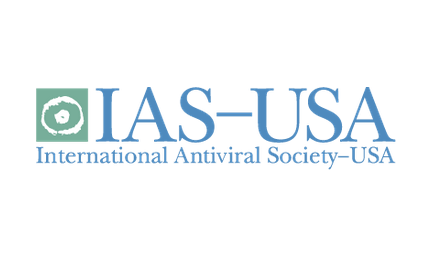Below are highlights from the new IAS-USA HIV guidelines (published Dec 2022; download PDF here)

- Rapid ART
- The guidelines recommend Initiation of ART the same day and within 7 days of HIV diagnosis, including acute HIV.
- Screen for TB and cryptococcal meningitis and if positive, start OI treatment first, then start ART within 2 weeks for TB and within 2-4 weeks for cryptococcal meningitis.
- Evidence-based strategies for engagement in care include linkage navigation, transportation, appointment reminders, psychosocial support, data-to-care (identifying and outreaching to people not in care), mobile clinics, telehealth, street medicine, home visits, expanded clinic hours, pharmacy delivery, support from community health workers, and addressing stigma and discrimination.
- Initial ART regimens
- Bictegravir (BIC)/TAF/FTC (BIK)
- or Dolutegravir (DTG) plus TDF/FTC or TAF/FTC (TXF/XTC)
- If HIV RNA <500k, no HBV and no sig resistance, can use DTG/3TC.
- If taking TXF/XTC PrEP at the time of HIV acquisition, check a genotype and use a BIK or DTG-based regimen. Even those with NNRTI resistance do well on these regimens.
- If taking CAB PrEP at the time of HIV acquisition, check an InSTI+RT genotype and start a DRV-based regimen + TXF/XTC.
- If pregnant: use DTG + TAF/FTC (best outcomes); alternate is DTG + TDF/FTC.
- Switching ART regimens during viral suppression
- Simplifying to 2-drug regimens DTG/3TC or DTG/RPV can be done with ongoing viral suppression, no history of treatment failure, and no chronic hepatitis B.
- People who are virally suppressed (such as with a PI) with pre-existing M184V/I, K65R mutations and other nRTI resistance mutations can switch to BIK or DTG+TXF/XTC to simplify, enhance adherence, and/or reduce drug interactions and side effects.
- Switching to CAB/RPV long-acting injectable (LAI)
- The IAS-USA guidelines only recommends using CAB/RPV LAI for people who are virally suppressed on oral ART.
- The panel recommends checking a proviral RT-pro genotype for people without genotypes prior to starting ART. Avoid using CAB/RPV LAI if there’s RPV resistance.The IAS-USA panel does not (yet) recommend using CAB/RPV LAI for people who are not virally suppressed, citing the risk of NNRTI and InSTI resistance and subsequent lack of PO options with treatment failures.
- Risks of CAB/RPV failures appears to be higher when injections are given every 8 weeks rather than every 4 weeks.
- Switching ART regimens during virologic failure
- NNRTI resistance with at least one active nRTI: use BIK or DTG+TXF/XTC.
- No active nRTIs: use DRVc/r + TXF/XTC or DTG + boosted PI. DTG+TXF/XTC is a riskier option; 4% have failure with DTG resistance.
- InSTI (RAL/EVG) resistance: use DTG BID + 1-2 fully active drugs from novel classes.
- High-level InSTI resistance and reduced PI susceptibility: used 2 fully active drugs from novel classes + recycled nRTIs for their partial activity.
- Managing viral “blips” with intermittent or persistent low-level viremia (<200 copies/mL):
- Check ART adherence, tolerability, side effects and drug interactions.
- Check for use of mineral supplements and antacids among people taking InSTIs, as that interaction is a common cause for low-level viremia. Check a genotype if the VL > 200 on 2 consecutive measures.
- Don’t change the ART regimen unless toxicity or intolerability is identified.
- Managing weight gain and metabolic complications from ART
- InSTIs and TAF are associated with significant weight gain, especially in the first year and more likely among women, Black and Latinx people.
- Data so far suggests that switching ART doesn’t seem to help and the benefits of these agents as effective HIV treatment outweigh the metabolic risks for most people.
- Counsel on potential weight gain and metabolic changes when using InSTIs or TAF.
- Check weight and BMI every 6 months and screen for diabetes every year.
- If there’s >5% weight gain, support people to exercise and modify their diet.
- Aging: assess for and address polypharmacy, comorbidities, cognitive function, mobility, fall risk and use integrated care models to support people aging with HIV.
- Same-day PrEP start is recommended with a negative rapid HIV antibody test and labs are drawn within 7 days of PrEP initiation. Use PEP if there was a high-risk encounter within the past 72 hours.
- Long-acting injectable (LAI) CAB PrEP
- Recommended for the prevention of sexual transmission of HIV across all populations.
- There is insufficient evidence thus far for people with risks from IDU alone.
- Renal insufficiency: no use restrictions (unlike TXF/FTC).
- Drug interactions: Contraindications include certain anticonvulsants and antimycobacterials.
- Dose adjustments are needed for use with rifabutin.
- Caution/adjust for gluteal implants/fillers and/or if there’s bleeding risk.
- Labs: In addition to HIV Ag/Ab, STD and pregnancy tests, get an HIV RNA at initiation, 1 month later and every 2 months with injections. No need to wait for lab results to give follow-up injections. HIV RNA tests are recommended because CAB potentially masks or delays an HIV Ag/Ab positive result. Creatinine tests are not required.
- PEP for HIV and STDs with 72 hours of high-risk exposure
- HIV PEP: BIK or DTG+TXF/XTC x 28 days; offer to start PrEP after.
- STD PEP to prevent gonorrhea, chlamydia or syphilis: consider doxycycline 200 mg x 1 for MSM and transgender women. Data for use in cisgender women are pending.
- Substance use disorders (SUD): screen everyone for SUD; offer medication treatment for opioid and alcohol use and contingency (incentives) for stimulant use; support people with SUD with peer support staff, telehealth, extended hours, mobile care, pharmacy delivery services.
- COVID and HIV:
- PLWH with CD4 <200 or are not virally suppressed are considered immunocompromised and should receive 3 vaccine doses in their primary series and COVID PrEP if an effective option becomes available (since Evusheld is no longer effective against current variants).
- They should also be treated with PAX if they become infected.
- All PLWH who recover from acute infection should be monitored for long COVID.
- Mpox and HIV: PLWH with CD4 <200 or are not virally suppressed are at risk for more severe disease and should receive TPOXX treatment. People at risk for mpox should also receive the JYNNEOS vaccine.
